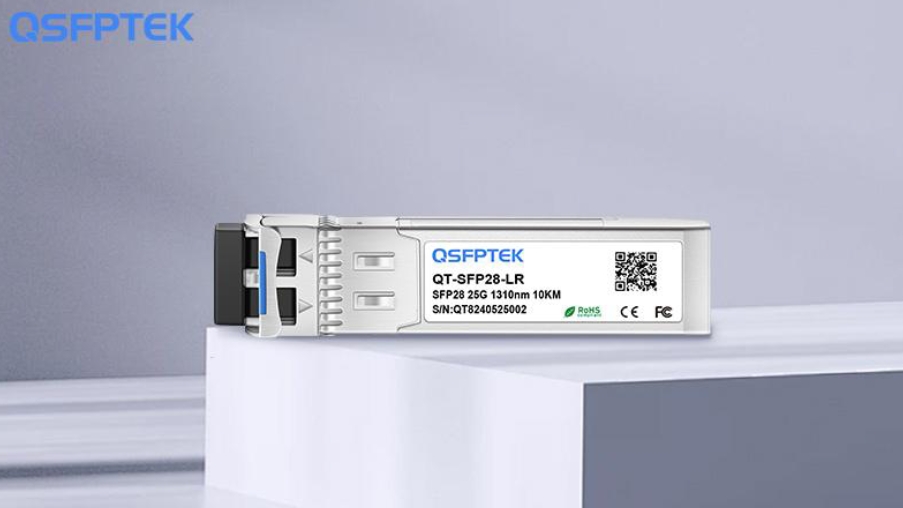
The Role of 25G Modules in Edge Computing: Enabling Low-Latency Connectivity for Edge Devices
Edge computing has rapidly emerged as a crucial technology for industries seeking to improve real-time data processing and minimize the delay associated with cloud-based solutions. At the heart of edge computing is the need for fast, reliable, and low-latency network connections that can support the massive influx of data generated by IoT devices, sensors, and other edge nodes. This is where 25G modules play a pivotal role in enhancing the efficiency and performance of edge computing architectures.
Why Low-Latency Connectivity Matters in Edge Computing
Edge computing brings computation and data storage closer to the data source, reducing the time it takes for data to travel back and forth from a central cloud server. This proximity to the source is essential for applications that require real-time processing, such as autonomous vehicles, industrial automation, healthcare devices, and smart city infrastructure. However, achieving low latency hinges on the network’s ability to transmit large amounts of data quickly and reliably.
25G modules are increasingly being adopted in edge computing because they provide the high-bandwidth, low-latency connections needed to handle this data influx. Compared to older 10G modules, 25G technology offers significantly faster data rates and more efficient use of network infrastructure, allowing edge devices to communicate and process data with minimal delay.
How 25G Modules Support Edge Computing
Increased Bandwidth and Data Rates
One of the key benefits of 25G modules is their ability to handle higher bandwidth requirements. As edge devices proliferate, the amount of data that needs to be processed locally grows exponentially. 25G modules can support these demands by providing up to 25 Gbps of throughput, compared to 10 Gbps from traditional 10G modules. This increase in data rate allows for faster transmission of large datasets, essential for applications like real-time analytics and machine learning at the edge.
Enhanced Network Efficiency
In many edge computing scenarios, there is a need to manage multiple devices in a geographically distributed area, such as smart grids or smart manufacturing environments. 25G modules enable better utilization of network infrastructure, especially in environments where fiber-optic connections are used. By using 25G modules, network operators can reduce the number of fibers required for the same data transmission capacity, making the entire setup more efficient and cost-effective.
Support for High-Density Environments
Edge computing environments often involve high-density deployments where numerous devices and sensors are operating simultaneously. The 25G modules, with their enhanced data capacity, are well-suited for these environments, providing stable and high-speed connections even when multiple devices are transmitting data at the same time. This is particularly useful in industries like telecommunications, healthcare, and autonomous systems, where uninterrupted, real-time data processing is critical.
Improving Real-Time Data Processing with 25G Modules
In edge computing, the ability to process data in real-time is critical for many applications, including autonomous systems, smart grids, and industrial IoT (IIoT). The enhanced bandwidth and low-latency characteristics of 25G modules ensure that data can be quickly transferred between devices and edge servers, enabling near-instantaneous decision-making processes.
For example, in autonomous driving systems, the need for rapid data processing is paramount. 25G modules allow sensors, cameras, and onboard computers to communicate in real time, ensuring that critical information such as obstacle detection and route planning is handled without delay. Similarly, in a smart manufacturing plant, 25G modules can support high-speed data transfers between machinery and edge servers, optimizing production lines and reducing downtime.
Advantages Over Traditional 10G and 40G Modules
When comparing 25G transceivers with traditional 10G and 40G technologies, several advantages become evident. First, 25G offers a more cost-effective solution than 40G modules, as it allows for higher data throughput without the need for expensive infrastructure upgrades. This makes it an ideal choice for edge computing deployments where budget constraints are a factor.
Moreover, 25G modules are designed to work efficiently in high-density, low-latency environments, making them superior to 10G modules for real-time applications. While 40G modules provide higher bandwidth, they are often overkill for most edge computing scenarios, where 25G can provide the perfect balance of performance and cost.
Challenges and Future Prospects
Despite their advantages, deploying 25G modules in edge computing environments does come with some challenges. One key issue is ensuring compatibility with existing infrastructure, as many networks are still built on 10G architectures. However, as more organizations adopt 25G technology, the market for compatible devices and networking equipment will continue to grow.
Looking ahead, the role of 25G modules in edge computing will likely expand as the demand for real-time processing, IoT, and AI-driven applications grows. As industries increasingly move toward decentralized computing models, 25G modules will play a key role in enabling efficient, scalable, and low-latency network connections for edge devices.
Conclusion
In summary, 25G modules offer a robust solution for edge computing by delivering the high-speed, low-latency connections needed for real-time data processing. As the number of edge devices and IoT applications continues to grow, the demand for efficient, scalable, and cost-effective network solutions like 25G modules will only increase, driving the future of edge computing.
